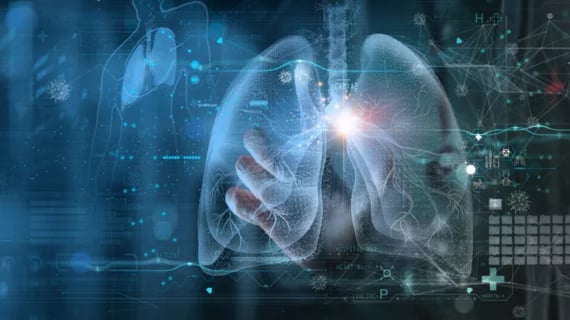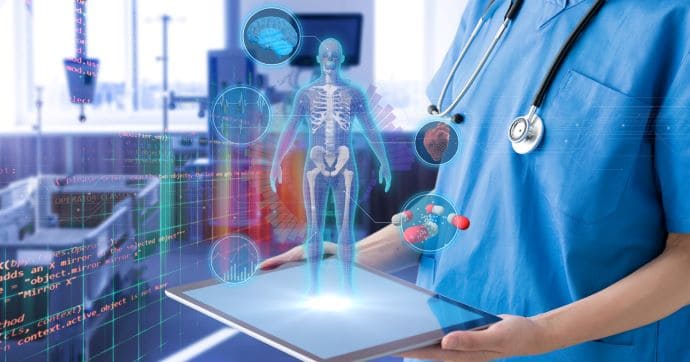Latest Trends in Diagnostic Imaging & Radiology Technology
The field of diagnostic imaging and radiology is rapidly evolving, driven by technological advancements that enhance accuracy, efficiency, and patient outcomes. From artificial intelligence (AI) to advanced 3D imaging, modern radiology is transforming healthcare diagnostics. In this blog, we explore the latest trends in diagnostic imaging and radiology technology that are shaping the future of medical imaging.
2/11/20252 min read


1. Artificial Intelligence (AI) in Medical Imaging
AI-powered tools are revolutionizing radiology by improving image interpretation, automating workflows, and enhancing diagnostic accuracy.
Key Developments:
AI algorithms assist radiologists in detecting diseases such as cancer, fractures, and lung infections.
AI-based software enhances image quality and reduces noise in X-ray, CT, and MRI scans.
Machine learning models predict disease progression, aiding in early diagnosis and treatment planning.
2. 3D and 4D Imaging
3D imaging allows for detailed visualization of organs and tissues, leading to more accurate diagnoses. The addition of 4D imaging incorporates real-time motion, which is particularly useful in cardiovascular and fetal imaging.
Applications:
3D mammography improves breast cancer detection rates.
4D ultrasound provides real-time fetal movement analysis.
Advanced 3D reconstruction aids in surgical planning and medical training.
3. Portable & Point-of-Care Imaging
Portable imaging devices are gaining popularity, providing faster diagnostics in emergency settings, rural areas, and bedside care.
Innovations:
Handheld ultrasound devices allow for quick and accessible scanning.
Portable X-ray machines enable imaging in critical care and remote locations.
Mobile CT and MRI scanners improve patient accessibility and convenience.
4. Hybrid Imaging Technologies
Combining different imaging modalities improves diagnostic precision by providing complementary information.
Examples:
PET-CT & PET-MRI: Combines functional and anatomical imaging for better disease detection.
SPECT-CT: Enhances nuclear medicine scans with CT integration.
Dual-Energy CT: Differentiates materials like calcium and iodine for more detailed imaging.
5. AI-Assisted Radiology Workflow Automation
Automation tools powered by AI are optimizing radiology workflows, reducing workload, and improving efficiency.
Features:
Automated report generation reduces human errors and speeds up diagnosis.
AI-driven scheduling systems optimize patient appointments and scan priorities.
Natural language processing (NLP) enhances radiology report structuring and analysis.
6. Low-Dose Radiation Imaging
With increased concerns about radiation exposure, new technologies are focusing on reducing dose levels while maintaining image quality.
Advancements:
AI-driven noise reduction techniques allow for lower radiation doses in CT scans.
Digital radiography innovations improve image capture efficiency with minimal exposure.
Adaptive imaging protocols adjust radiation based on patient size and condition.
7. Cloud-Based & Remote Imaging Solutions
Cloud-based imaging platforms enable easy storage, sharing, and remote access to medical images, improving collaboration and accessibility.
Benefits:
PACS (Picture Archiving and Communication Systems) allow seamless image sharing between healthcare providers.
Teleradiology services enable remote diagnosis and second opinions from experts worldwide.
AI-powered cloud storage enhances data security and efficient retrieval.
8. Advanced Contrast Agents & Molecular Imaging
New contrast agents and molecular imaging techniques are enhancing the ability to detect diseases at a cellular level.
Innovations:
Targeted contrast agents improve tumor and vascular imaging.
Optical imaging techniques allow for non-invasive cancer detection.
Molecular imaging aids in personalized medicine by identifying specific biomarkers.




Reference Website Link:
Radiological Society of North America (RSNA) – https://www.rsna.org
Aunt Minnie – https://www.auntminnie.com
National Institutes of Health (NIH) – Medical Imaging – https://www.nih.gov
Imaging Technology News (ITN) – https://www.itnonline.com
